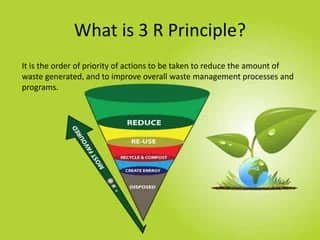The 3R Concept: Reduce, Reuse, and Recycle
In today’s world, where environmental degradation is a major concern, the 3R concept has gained significant importance. The 3R concept stands for Reduce, Reuse, and Recycle, and it is a simple approach to reducing waste and conserving resources. This article will explain each of the three R’s in detail and highlight their importance in preserving the environment.
Introduction
The introduction will provide an overview of the 3R concept and why it is important. It will also outline the structure of the article and what the readers can expect to learn.
What is the 3R Concept?
This section will define the 3R concept and explain what each R represents. It will also discuss the benefits of following the 3R approach, such as reducing waste, conserving resources, and lowering the environmental impact.
Reduce
The first R of the 3R concept is “Reduce.” This section will explain how to reduce waste by minimizing the use of resources, such as energy, water, and materials. It will also provide practical tips on how individuals can reduce waste in their daily lives.
Reuse
The second R of the 3R concept is “Reuse.” This section will explain how to reuse products or materials to reduce waste and conserve resources. It will provide examples of how to reuse various items, such as containers, bags, and clothing, and discuss the benefits of reusing products.
Recycle
The third R of the 3R concept is “Recycle.” This section will explain the importance of recycling and how it can reduce waste and conserve resources. It will discuss the different types of materials that can be recycled, the benefits of recycling, and how individuals can recycle at home or in their communities.
Importance of the 3R Concept
This section will highlight the importance of the 3R concept in preserving the environment. It will discuss the negative effects of waste on the environment and how the 3R concept can mitigate those effects. It will also highlight the benefits of adopting the 3R approach, such as reducing pollution, conserving resources, and reducing greenhouse gas emissions.
Challenges in Implementing the 3R Concept
This section will discuss the challenges that individuals and communities may face when trying to implement the 3R concept. It will provide examples of common challenges, such as lack of awareness, insufficient infrastructure, and resistance to change. It will also offer solutions on how to overcome these challenges and encourage individuals and communities to adopt the 3R approach.
Conclusion
The conclusion will summarize the key points of the article and reiterate the importance of the 3R concept in preserving the environment. It will encourage readers to adopt the 3R approach in their daily lives and communities.
FAQs
- Q. What is the difference between “Reduce” and “Reuse” in the 3R concept?
- A. “Reduce” focuses on minimizing the use of resources to create less waste, while “Reuse” focuses on finding new ways to use existing products or materials.
- Q. What are the benefits of recycling?
- A. Recycling conserves resources, reduces waste, saves energy, reduces pollution and greenhouse gas emissions, and helps to create jobs in the recycling industry.
- Q. How can I recycle at home?
- A. You can recycle at home by separating recyclable materials from non-recyclable materials and placing them in designated recycling bins. Check with your local recycling program to see which materials are accepted for recycling in your area.
- Q. Why is the 3R concept important for the environment?
- A. The 3R concept is important for the environment because it helps to reduce waste and conserve resources, which in turn helps to reduce pollution and greenhouse gas emissions, and helps to mitigate the negative effects of waste on the environment.
- Q. How can we overcome the challenges of implementing the 3R concept in our communities?
- A. We can overcome the challenges of implementing the 3R concept in our communities by raising awareness about the importance of the 3R approach, providing education and resources to individuals and communities, creating and improving recycling infrastructure, and promoting policies that support the 3R approach.
